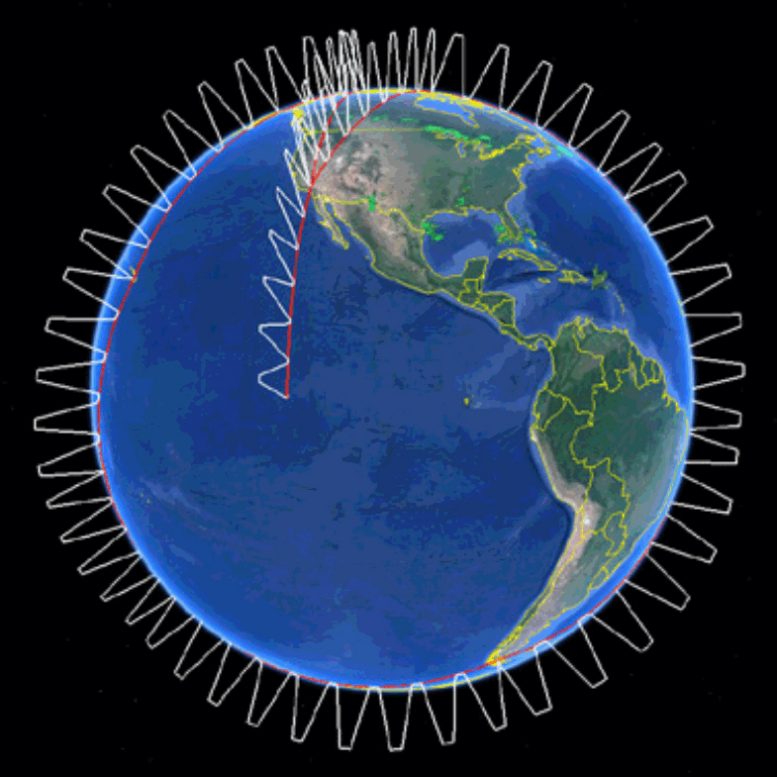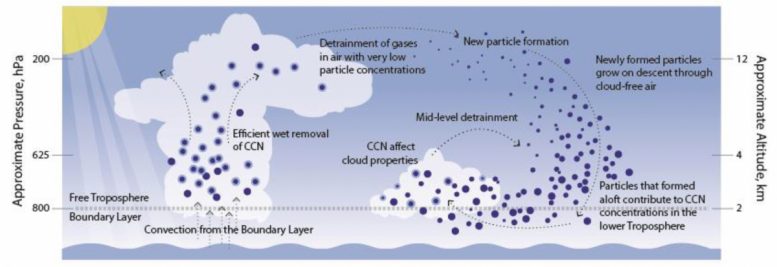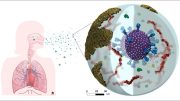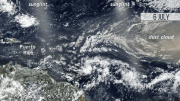
Tropical convection between Fiji and New Zealand from the NASA DC-8 during the Atmospheric Tomography (ATom) mission on February 5, 2017. Credit: Samuel Hall/National Center for Atmospheric Research
Global airborne mission finds a particle formation is brightening clouds.
When clouds loft tropical air masses higher in the atmosphere, that air can carry up gases that form into tiny particles, starting a process that may end up brightening lower-level clouds, according to a CIRES-led study published today in Nature. Clouds alter Earth’s radiative balance, and ultimately climate, depending on how bright they are. And the new paper describes a process that may occur over 40 percent of the Earth’s surface, which may mean today’s climate models underestimate the cooling impact of some clouds.
“Understanding how these particles form and contribute to cloud properties in the tropics will help us better represent clouds in climate models and improve those models,” said Christina Williamson, a CIRES scientist working in NOAA ESRL’s Chemical Sciences Division and the paper’s lead author.

ATom flights sampled the atmosphere continuously from near sea level to an altitude of about 12 km, in four around-the-world deployments in every season. Credit: NASA
The research team mapped out how these particles form using measurements from one of the largest and longest airborne studies of the atmosphere, a field campaign that spanned the Arctic to the Antarctic over a three-year period.
Williamson and her colleagues, from CIRES, CU Boulder, NOAA, and other institutions, including CIRES scientist Jose Jimenez, took global measurements of aerosol particles as part of the NASA Atmospheric Tomography Mission, or ATom. During ATom, a fully instrumented NASA DC-8 aircraft flew four pole-to-pole deployments—each one consisting of many flights over a 26-day period—over the Pacific and Atlantic Oceans in every season. The plane flew from near sea level to an altitude of about 12 km, continuously measuring greenhouse gases, other trace gases, and aerosols.

Air sampling inlets on the NASA DC-8 aircraft. Credit: Samuel Hall/National Center for Atmospheric Research
“ATom is a flying chemistry lab,” Williamson said. “Our instruments allowed us to characterize aerosol particles and their distribution in the atmosphere.” The researchers found that gases transported to high altitudes by deep, convective clouds in the tropics formed large numbers of very small aerosol particles, a process called gas-to-particle conversion.
Outside the clouds, the air descended toward the surface and those particles grew as gases condensed onto some particles and others stuck together to form fewer, bigger particles. Eventually, some of the particles became large enough to influence cloud properties in the lower troposphere.
In their study, the researchers showed that these particles brightened clouds in the tropics. “That’s important since brighter clouds reflect more energy from the sun back to space,” Williamson said.

Deep convective clouds transport gases higher in the atmosphere, where some of the gases condense to form many very small particles. Some particles grow big enough to affect clouds, brightening them. Figure: Williamson et al., Nature. Credit: Kathy Bogan/CIRES
The team observed this particle formation in the tropics over both the Pacific and Atlantic Oceans, and their models suggest a global-scale band of new particle formation covering about 40 percent of the Earth’s surface.
In places with cleaner air where fewer particles exist from other sources, the effect of aerosol particle formation on clouds is larger. “And we measured in more remote, cleaner locations during the ATom field campaign,” Williamson said.
Exactly how aerosols and clouds affect radiation is a big source of uncertainty in climate models. “We want to properly represent clouds in climate models,” said Williamson. “Observations like the ones in this study will help us better constrain aerosols and clouds in our models and can direct model improvements.”
Reference: “A large source of cloud condensation nuclei from new particle formation in the tropics” by Christina J. Williamson, Agnieszka Kupc, Duncan Axisa, Kelsey R. Bilsback, ThaoPaul Bui, Pedro Campuzano-Jost, Maximilian Dollner, Karl D. Froyd, Anna L. Hodshire, Jose L. Jimenez, John K. Kodros, Gan Luo, Daniel M. Murphy, Benjamin A. Nault, Eric A. Ray, Bernadett Weinzierl, James C. Wilson, Fangqun Yu, Pengfei Yu, Jeffrey R. Pierce and Charles A. Brock, 16 October 2019, Nature.
DOI: 10.1038/s41586-019-1638-9









Be the first to comment on "Global Airborne Mission Finds Tiny Particles Lead to Brighter Clouds in the Tropics"